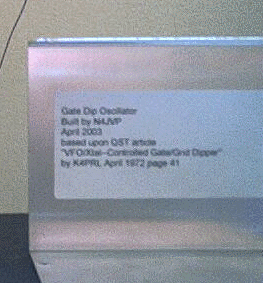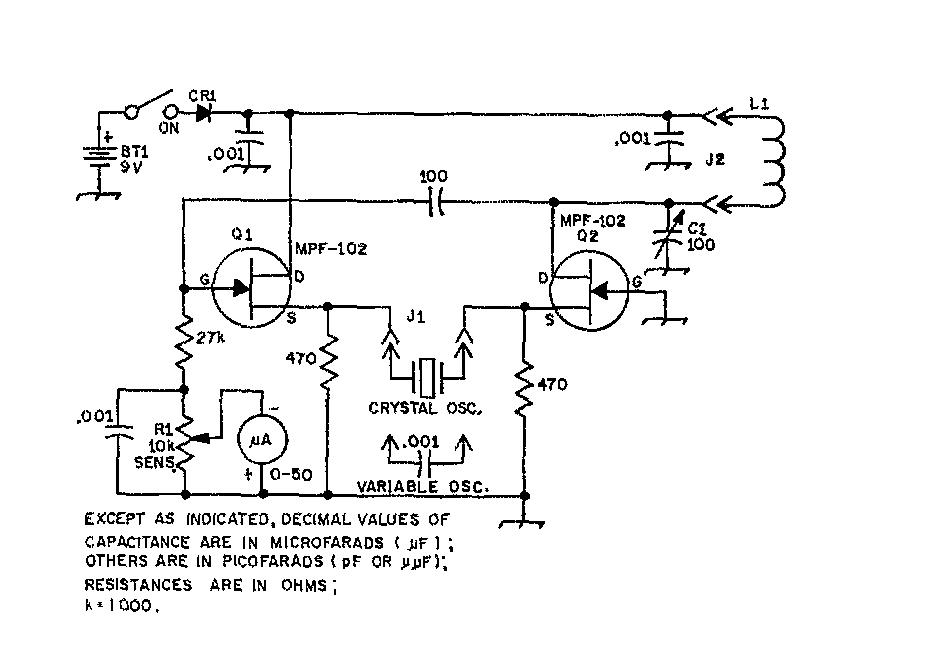
My need for a new GDO was based upon a pair of Heathkit GD-1B grid dip oscillators. Both were obtained via eBay auctions and each had their own problems.
The filter capacitor had leaked in the first GDO purchased. No damage was caused by the
leaky 'lytic and replacing the cap probably would have gotten it working. There
was little point in making the repair because the GDO's dial would bind against
the case as it was turned. For $12 I had a potential parts donor and a full set
of coils.
The second GDO had no coils and was purchased for $10. It was found to be in
working order and both the filter capacitors were replaced with fresh units. The
selenium rectifier was replaced with a silicon diode.
Once the parts swap was completed some testing was done. The accuracy of the GDO
dial varied from kilocycles to megacycles and the effects of hand-capacitance
only made things worse.
What to do? It was decided the working GDO would be a display piece and a homebrew GDO would be built into the donor unit. A circuit using a single JFET and a split-stator capacitor was constructed in the donor unit. A good signal was generated by the oscillator but once again hand-capacitance was an issue. The case of the GD-1B is a light-weight affair that fails to provide enough shielding. Time to start over.

An article by K4PRL in the April 1972 issue of QST describes a gate dip oscillator which uses a pair of JFETS. The only differences between the schematic shown above and homebrewed GDO are the variable capacitor, the coils and the meter. A 60 pF capacitor was used in place of the 100 pF unit called for. The substitute came from a scrapped signal generator and features are 3:1 ball-bearing drive. An added bonus was the dial indicator. It was an easy decision to use the GD-1B coils rather than wind new ones as specified in the article. A 200 uA meter was used in place of the 50 uA meter specified.
A 3x4x5 inch Bud box was used as the case for the new gate dip oscillator. A smaller size could have been used but that would limit the amount of real estate available for the dial scale. The scale as shown in the picture above is three and one quarter inches in diameter. A simple scale was produced using WB8RCR's Dial software and was printed on an Avery 5265 label before being trimmed to fit. The 0-10 scale greatly simplified the dial graphics. This sort of scale does require a separate sheet describing the calibration. A copy of this sheet is kept in the coil box. The label on the top of the GDO is a cheat-sheet.
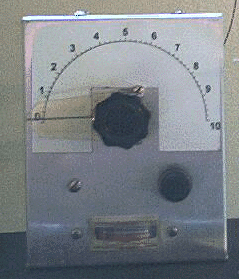
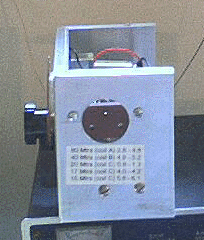
Only one problem was encountered during the assembly. All the hardware had been test-fitted before the actual assembly and during the assembly a change was made to how the perf-board would be mounted. The resulting placement interfered with the variable capacitor and the board was notched to allow clearance.
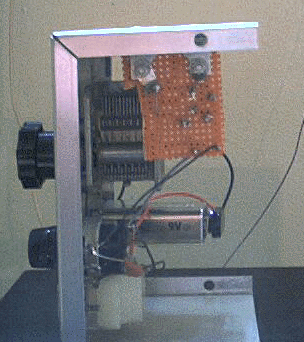
The oscillator generates a strong signal and the Bud box case provides ample shielding from hand-capacitance. It was assumed the coverage would be continuous within the range of the coils but it didn't turn out that way. The coil marked 2-5 Mcs. covers 3.000 to 4.780 megacycles. The coil marked 5-14 Mcs. covers 4.675 to 9.065 megacycles. The coil marked 14-37 Mcs. does not overlap with the previous coil. This coil covers 13.425 to 25.690 megacycles. The fourth coil (37-100 Mcs) starts coverage at 25.140 megacycles.
What happened to the coverage between 9 and 13.5 megacycles? Some pondering should produce an answer. I could rewind the fourth coil to fill the gap but the coils really belong to the GD-1B. Instead I will look for another set of GD-1 coils to use with this homebrew GDO. The second set of coils will probably end up being rewound so I didn't save much by using the GD-1B coils but at least the dial won't need to be re-calibrated. The addition of an RF choke between the battery and the oscillator will be made in the future. The meter scale will be changed to a white background.
